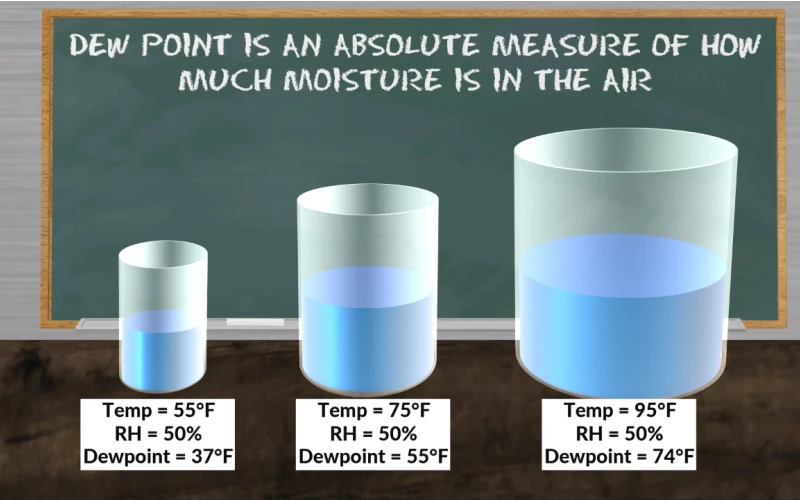
# High Dew Point Impact on Human Comfort and Health
## Understanding Dew Point and Its Significance
The dew point is the temperature at which air becomes saturated with water vapor, leading to condensation. A high dew point indicates a significant amount of moisture in the air, which can have profound effects on human comfort and health.
## How High Dew Point Affects Human Comfort
When dew point temperatures rise above 65°F (18°C), most people begin to feel uncomfortable. Here’s why:
### 1. Reduced Evaporative Cooling
Our bodies rely on sweat evaporation to regulate temperature. In high dew point conditions, the air is already saturated with moisture, making it difficult for sweat to evaporate effectively. This leads to that familiar “sticky” feeling and makes physical activity more challenging.
### 2. Perceived Temperature Increase
High dew points make temperatures feel hotter than they actually are. For example, at 85°F (29°C) with a 75°F (24°C) dew point, it can feel like 95°F (35°C) or more to the human body.
### 3. Sleep Disruption
Nighttime comfort is particularly affected by high dew points. When overnight temperatures don’t drop below the dew point, it prevents proper cooling of the body during sleep, leading to restless nights.
## Health Implications of High Dew Point Conditions
1. Heat-Related Illnesses
Prolonged exposure to high dew point conditions increases the risk of heat exhaustion and heat stroke, especially for vulnerable populations like the elderly, young children, and those with chronic illnesses.
2. Respiratory Issues
High moisture levels can exacerbate respiratory conditions such as asthma and allergies by promoting mold growth and dust mite populations. The heavy, moist air can also make breathing more difficult for those with chronic obstructive pulmonary disease (COPD).
3. Cardiovascular Stress
The body works harder to cool itself in high dew point conditions, putting additional strain on the cardiovascular system. This can be particularly dangerous for individuals with pre-existing heart conditions.
4. Dehydration Risk
Despite the humid conditions, people can still become dehydrated because they may not realize how much fluid they’re losing through increased sweating.
## Mitigation Strategies
Indoor Comfort
Use air conditioning with proper humidity control to maintain indoor dew points below 60°F (15.5°C) for optimal comfort. Dehumidifiers can be particularly effective in basements and other damp areas.
Outdoor Activities
Limit strenuous outdoor activities during periods of high dew points, especially during the hottest parts of the day. Stay hydrated and take frequent breaks in shaded or air-conditioned areas.
Clothing Choices
Wear lightweight, breathable fabrics that allow for better air circulation and sweat evaporation. Light colors that reflect sunlight can also help reduce heat absorption.
## Conclusion
High dew point conditions create significant challenges for human comfort and health. By understanding these impacts and implementing appropriate strategies, individuals can better protect themselves during periods of high humidity. Monitoring local weather reports for dew point information (rather than just relative humidity) can provide more accurate guidance for planning daily activities and maintaining personal comfort.
Keyword: high dew point
